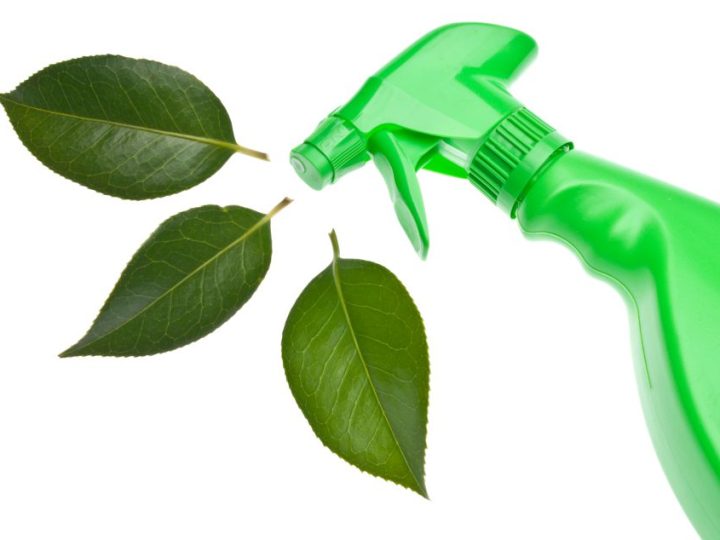

Embracing waste reduction in commercial cleaning transcends mere environmental stewardship; it represents a strategic pivot towards sustainability, cost savings, and regulatory compliance. At the heart of this transformation lies the adoption of eco-friendly products, from biodegradable cleansers to non-toxic solutions, alongside robust recycling programs that encompass paper, plastic, and electronics. The shift from disposable items to durable microfiber cloths further underscores this commitment to minimizing waste. This article will guide you through the intricacies of implementing these waste reduction strategies, navigating the challenges such as initial investments and staff training, and ultimately, measuring the success of your initiatives through waste audits and cost analysis. With a focus on practical steps and tangible benefits, we aim to equip businesses with the knowledge to make a meaningful impact on both the environment and their bottom line.
What is waste reduction in commercial cleaning?
Waste reduction in commercial cleaning is a comprehensive approach aimed at minimizing the generation of waste during cleaning processes. This strategy is deeply rooted in the selection and use of eco-friendly cleaning products that are both biodegradable and non-toxic, significantly reducing the detrimental environmental impact of traditional cleaning chemicals.
Furthermore, it involves the establishment of recycling programs that effectively manage waste materials such as paper, plastic, and electronics, diverting them from landfills. A pivotal component of waste reduction is the transition towards durable cleaning tools, with a particular emphasis on microfiber cloths. These tools not only offer an eco-friendly alternative to disposable items but also enhance cleaning efficiency and performance.
By integrating these practices, businesses not only adhere to green cleaning principles but also demonstrate a commitment to sustainability, paving the way for a healthier planet and future.
Why is waste reduction important?
Waste reduction is critical for a multitude of reasons, each contributing to a sustainable and efficient operational model for businesses. Environmentally, it mitigates the release of pollutants, safeguarding ecosystems and reducing the overall carbon footprint. This is not just about preserving the planet for future generations but also about immediate benefits such as improved air and water quality.
From a cost efficiency standpoint, reducing waste directly impacts the bottom line. By minimizing the amount of waste produced, businesses can save on purchasing, handling, and disposal costs, making operations leaner and more financially sustainable.
Moreover, compliance with environmental laws is another compelling reason. Regulations are becoming stricter as the global community places more emphasis on environmental protection. Companies that proactively adopt waste reduction practices are better positioned to meet these regulations, avoiding potential legal and financial penalties.
In essence, waste reduction is not just an environmental imperative but a strategic business decision that enhances brand reputation, operational efficiency, and regulatory compliance, marking a company as a responsible member of the global community.
Environmental benefits
The environmental benefits of waste reduction in commercial cleaning are both profound and far-reaching. By significantly minimizing waste, businesses dramatically lower their environmental impact, which in turn helps preserve natural resources and biodiversity. This crucial step leads to a decrease in landfill usage and a reduction in various forms of pollution, contributing to cleaner air and water. Moreover, adopting eco-friendly practices plays a pivotal role in combating climate change by reducing the greenhouse gas emissions associated with waste production and disposal.
Cost efficiency
Waste reduction directly translates into cost savings for businesses. Focusing on minimizing waste as part of routine office cleaning allows companies to reduce the demand for raw materials and lower disposal costs, leading to a more economically sustainable operation. Investing in durable products and embracing recycling can result in significant long-term savings. Therefore, waste reduction is not only an environmental choice but also a financially astute strategy.
Compliance with laws
Adherence to waste reduction practices is crucial for compliance with increasingly stringent environmental regulations. Governments and regulatory bodies around the world are implementing stricter laws on waste management, aiming to foster sustainability and protect the environment. By proactively reducing waste, businesses can avoid potential fines and penalties, ensuring they meet legal requirements. This proactive approach not only demonstrates a commitment to environmental stewardship but also positions the business as a responsible and forward-thinking entity in the eyes of both regulators and the public.
Implementing waste reduction
Implementing waste reduction in commercial cleaning is a strategic process that hinges on the adoption of eco-friendly products. These products are pivotal, as their biodegradable and non-toxic properties significantly minimize the environmental footprint of cleaning activities. Alongside this, the development of recycling programs targeting materials such as paper, plastic, and electronics is crucial for diverting waste from landfills and fostering a more sustainable, circular economy.
Equally important is the transition towards using microfiber cloths over disposable alternatives. This shift not only reduces waste but also elevates cleaning efficiency, showcasing the dual benefits of environmental care and operational effectiveness. By meticulously integrating these components, businesses can markedly decrease their waste production, align with global sustainability objectives, and make a positive impact on the planet.
Eco-friendly products
Emphasizing the use of eco-friendly products in commercial cleaning is key to minimizing environmental impact. These products, characterized by their biodegradable and non-toxic nature, ensure that cleaning practices are safe for both the environment and human health. Opting for such products significantly reduces the ecological footprint of cleaning operations.
| Eco-Friendly Product | Brand Examples | Active Ingredients | Benefits |
|---|---|---|---|
| All-purpose Cleaner | Brand A, Brand B | Plant-based surfactants | Biodegradable, non-toxic, safe for various surfaces |
| Glass Cleaner | Brand C, Brand D | Vinegar, Ethanol | Streak-free cleaning, non-toxic, readily biodegradable |
| Disinfectant | Brand E, Brand F | Thymol (derived from Thyme Oil) | Kills 99.9% of germs, non-toxic, biodegradable |
Types: Biodegradable, non-toxic
Focusing on biodegradable and non-toxic types of cleaners is crucial. These substances break down naturally without harming the ecosystem, unlike conventional cleaning agents that can contribute to pollution and health hazards.
Recycling programs
Implementing recycling programs is essential for effective waste management. By concentrating on recycling paper, plastic, and electronics, businesses can significantly reduce waste destined for landfills. These programs not only bolster environmental sustainability but also foster a culture of conservation and responsibility.
| Step | Action | Description |
|---|---|---|
| 1 | Audit | Assess current waste management practices to identify recyclable materials. |
| 2 | Engage | Train and motivate employees on the importance and methods of recycling. |
| 3 | Implement | Set up clearly labeled recycling bins for paper, plastic, and electronics. |
| 4 | Monitor | Regularly monitor and adjust the program based on feedback and waste audit results. |
Elements: Paper, plastic, electronics
Targeting specific elements such as paper, plastic, and electronics for recycling plays a pivotal role in enhancing waste reduction efforts. Properly managing these materials helps in mitigating environmental pollution and conserving natural resources.
Microfiber vs disposable
The debate between microfiber cloths and disposable cleaning tools is significant in the context of waste reduction. Microfiber cloths, with their reusability and efficiency, offer a sustainable alternative to disposable items that contribute to waste and environmental degradation.
| Feature | Microfiber Cloths | Disposable Cloths |
|---|---|---|
| Cost | Higher initial cost, lower long-term expenses | Lower initial cost, higher long-term expenses |
| Waste | Reusable, significantly less waste produced | Single-use, contributes to landfill waste |
| Efficiency | Higher cleaning efficiency, less water and chemicals needed | Less efficient, may require more product for the same job |
| Durability | Can last several hundred washes | Designed for single use, not durable |
Benefits of microfiber
Microfiber cloths present numerous advantages, including their durability and reusability, which contribute to lower waste production. Their superior cleaning efficiency facilitates more effective removal of dust and dirt, ensuring a cleaner and more hygienic environment. By prioritizing microfiber, businesses can achieve notable environmental and operational benefits.
Challenges of waste reduction
Implementing waste reduction in commercial cleaning, while beneficial, presents several challenges. The initial investment for eco-friendly products and durable cleaning tools can pose a significant hurdle, particularly for small to medium-sized businesses. Furthermore, the cost of eco-friendly products often surpasses that of traditional cleaning supplies, which can be a deterrent for companies with tight budgets.
Staff training emerges as another crucial aspect; equipping employees with the knowledge and skills for sustainable cleaning practices demands both time and financial resources. Utilizing methods such as workshops and online courses can mitigate this issue, albeit at an additional expense.
Lastly, the challenge of sourcing eco-products that fulfill both performance and sustainability standards requires thorough research. Businesses must navigate through certifications and assess the sustainability practices of suppliers, which can restrict the availability of suitable products. Overcoming these obstacles is vital for companies aiming to minimize their environmental footprint through effective waste reduction strategies.
Initial investment
The initial investment required for adopting eco-friendly cleaning practices can be significant. Transitioning to sustainable products and equipment often involves higher upfront costs, which can be a considerable challenge for businesses, especially those operating on tight budgets.
| Type of Investment | Estimated Cost Range | Long-term Savings Potential |
|---|---|---|
| Eco-friendly cleaning products | $500 – $2,000 (depending on business size) | 20-30% reduction in product usage due to efficiency |
| Durable cleaning tools (e.g., microfiber cloths) | $200 – $1,000 | 50-70% savings on disposable tools over 5 years |
| Recycling program setup | $100 – $500 | Reduction in waste disposal costs by up to 40% |
Cost of eco-friendly products
The cost of eco-friendly products is generally higher than that of traditional cleaning supplies. These products, prized for their biodegradable and non-toxic attributes, demand a premium that can impact a company’s budget and financial planning.
| Product Type | Eco-friendly Product Cost | Traditional Product Cost | Cost Difference |
|---|---|---|---|
| All-purpose cleaner | $15 per gallon | $10 per gallon | +$5 per gallon |
| Glass cleaner | $14 per gallon | $9 per gallon | +$5 per gallon |
| Disinfectant | $20 per gallon | $15 per gallon | +$5 per gallon |
Staff training
Staff training plays a crucial role in the successful implementation of waste reduction strategies. Proper education on sustainable cleaning practices ensures that eco-friendly initiatives are executed effectively. However, this training necessitates both time and financial resources, adding to the overall cost.
| Training Topic | Description | Estimated Training Time |
|---|---|---|
| Eco-friendly cleaning practices | Techniques and products for sustainable cleaning | 2 hours |
| Recycling and waste management | Proper sorting and disposal methods | 1 hour |
| Use and care of microfiber cloths | Maximizing the lifespan and effectiveness of microfiber tools | 1 hour |
Methods: Workshops, online courses
To address the need for staff training, businesses can utilize workshops and online courses. These methods provide flexible and in-depth learning opportunities but come with additional costs that must be considered in the budgeting process.
| Training Method | Provider | Cost | Focus Area |
|---|---|---|---|
| Workshop | Local Environmental Agency | $100 – $300 per session | Eco-friendly cleaning techniques |
| Online Course | Green Cleaning Certification Program | $50 – $150 per person | Comprehensive green cleaning practices |
Sourcing eco-products
Sourcing eco-products that align with sustainability and performance standards presents a notable challenge. Businesses must carefully evaluate products against specific criteria, including certifications and supplier sustainability practices. This meticulous process can be time-consuming and may restrict the selection of appropriate products.
| Criteria | Description | Certifications/Indicators |
|---|---|---|
| Biodegradability | Ability of a product to break down naturally | Green Seal, EcoLogo |
| Non-toxicity | Absence of harmful chemicals | EPA Safer Choice |
| Supplier sustainability | Environmental and social responsibility of the supplier | ISO 14001, B Corp Certification |
By addressing these challenges with detailed planning and strategic investments, businesses can effectively implement waste reduction strategies in commercial cleaning, leading to significant long-term benefits both financially and environmentally.
Measuring success
Measuring the success of waste reduction initiatives in commercial cleaning is pivotal for gauging their impact and refining strategies. This evaluation starts with conducting waste audits, a process that includes sorting, weighing, and analyzing waste. Such audits are instrumental in identifying areas for improvement and tracking progress over time.
Analyzing costs plays a crucial role as well, enabling businesses to assess the financial benefits derived from their waste reduction efforts. By comparing costs before and after the implementation of eco-friendly practices, companies can quantify their savings and justify the investment in sustainability.
Furthermore, gathering feedback from both employees and customers offers invaluable insights. Feedback helps in understanding the practical application and reception of green initiatives, ensuring they are both effective and well-received. Through these comprehensive measures, businesses can effectively quantify the success of their waste reduction strategies, ensuring alignment with their sustainability goals and operational efficiency.
Conducting waste audits
Conducting waste audits serves as a foundational step in assessing the efficacy of waste reduction strategies. This detailed process, which includes sorting, weighing, and analyzing waste, enables businesses to identify specific waste streams and quantify waste generation. By understanding the nuances of their waste production, companies can target areas for improvement and effectively track the progress of their sustainability efforts over time.
Analyzing costs
Analyzing costs is a critical component of waste reduction initiatives. This involves scrutinizing the expenses associated with waste management and reduction efforts. By conducting a thorough cost analysis, businesses can evaluate the financial benefits of their eco-friendly practices, ensuring that their investments yield tangible returns and contribute to long-term sustainability.
Comparing before and after
Comparing before and after the implementation of waste reduction measures provides a clear picture of their impact. This comparison is vital for quantifying the direct benefits, such as a decrease in waste production and lower disposal costs. It highlights the effectiveness of sustainable practices and reinforces the value of committing to environmental stewardship.
Gathering feedback
Gathering feedback is essential for a comprehensive evaluation of waste reduction strategies. Feedback from employees and customers offers critical insights into the practical application and acceptance of these measures. Understanding the perspectives of those affected by sustainability initiatives allows businesses to refine their approaches, ensuring that they are both impactful and well-received.
Frisco Brothers Janitorial has a commitment to reducing waste every day
When you select Frisco Brothers Janitorial as your commercial cleaning services for your office, you’re doing your part to cut down on waste. Call us today for your quote!



